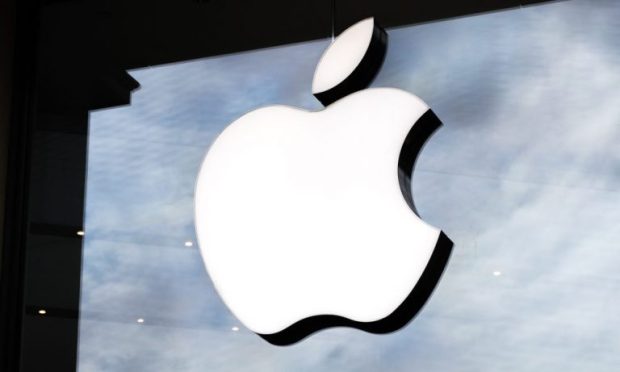iWhat? Apple Does A Number On Its Numbers Game

Tim Cook’s recent statement about Apple wearable sales is a reminder of Apple’s mastery of reporting numbers that are not really numbers. We unpack the mystery — and history — of Apple numbers game.
In business, the numbers are everything — proof positive that strategy is working or not.
Apple has its problems, and those problems don’t get much illumination in terms of numbers, at least they won’t in the months ahead.
Bright spots? Well, they get digits indeed.
The company is somewhat choosy (as is within its rights) when it comes time for disclosing which of its product lines gaining traction, backing up sentiment with data detailing what’s selling, and where, and when, from which observers, and specifically investors, can deduce whether Apple is unmatched colossus or beset with challenges.
Consider the fact that CEO Tim Cook told CNBC this week that sales of Apple wearables have blown past the top line contribution to iPod sales even when the music players were at their peak — driven by the Apple Watch and AirPods headphones.
“On a trailing basis … the revenue for wearables is already 50 percent more than iPod was at its peak,” Cook said in his commentary.
Apple Watches and AirPods have each generated, CNBC noted, quoting the executive, “between four and six times more in sales” than the iPod contributed, as measured by timeframe since those hardware products debuted.
“I think everybody would say it was an incredibly important product for Apple, full of innovation and probably the trigger for the company getting on a very different trajectory and into other markets,” Cook said, and now the same hope seems to be there for a trajectory, given tailwinds via wearables.
The change in trajectory may be devoutly wished. The company most recently slashed its iPhone production by 10 percent. And as readers of this space no doubt know, the iPhone, and specifically a slowdown tied to consumer demand for the phones in China, lie behind reduced guidance for the current quarter’s top line and beyond.
If Cook’s claims are on the money, it would be a pretty heady rise for the wearables segment, as the firm has recently debuted the Wearables Series 4. At least one analyst has quantified some expectations for the AirPods, as late last year, reported CNBC, TF International Securities analyst Ming-Chi Kuo projected Apple would ship as many as 28 million AirPods units in 2018 — leagues above the roughly 16 million in 2017 and perhaps as many as 55 million units this year.
The hints that Cook is throwing out on the wearables beg the question: Why not just give out some concrete numbers? After all, in the past the firm has not given out wearables units. It’s possible to get some sense of breadth and scope of the newer hardware, given the fact that iPod sales through their annual peak in the past decade were north of 54 million units, at an average selling price of a few hundred dollars.
It’s interesting that Cook would use the iPod as a nod toward changing trajectories, since moving toward the iPod peak (we are not counting 2008, when everything tanked), the market cap was nearing $200 billion, a fraction of today.
Illuminating a Lack of Illuminating
But Cook’s vague showcasing of the wearables speaks to a larger issue — one of disclosure, a bit game perhaps of shouting to investors to “look over here! No, no, don’t look over there.”
You may recall that late in 2018, the company said that it would stop disclosing units sold of products as iconic as iPhones and Macs — reversing a practice that had been in place for several years. In the last disclosure on iPhones we have in hand, units were flat at just under 47 million. No one likes to shine a spotlight on bad news, and so the spotlight has been turned off.
But not for good news.
Cook is giving a hint to the sanguine fortunes of wearables, etc., outlining a trajectory for a segment that in the last quarterly report was roughly $4 billion … versus the iPhone segment that at its recent peak in September was giving as much as $62 billion. Though management downplays the importance of units, we note, too that the implication would be that pricing would and could and sometimes should make up for any drag here.
That’s not the case with the iPhones, where upgrade cycles are getting longer and where especially in China consumers seem to be opting for cheaper models offered by smartphone peers.
As one analyst said during the conference call that highlighted Apple’s decision to stop disclosing units, “some people may fear that this now means that the iPhone units are going to start going negative year-over-year, because it’s easier to talk about great things and not show the details of things that aren’t so great.”
Consider too, in the wake of the iPhone “going dark” (oh, and that there will also be no more iPad and Mac disclosures) news the fact that Apple has not and does not disclose, say, HomePod sales. Estimates can and do come from some research firms. Nor is there a precise accounting of Apple Pay users.
Cook said at the time the company said it would stop disclosing the flagship unit sales that the Wall Street focus on units its “a little bit like if you go to the market and you push your cart up to the cashier and she says or he says, ‘How many units you have in there?’ It doesn’t matter a lot how many units there are in there in terms of the overall value of what’s in the cart.”
Yes, that’s true if you’ve made the leap from selling fish sticks to selling caviar, to use that “market” analogy. What’s filling up the cart is rather important. Fewer units can be trumped by higher average selling prices, but that’s not necessarily what’s happening at the flagship hardware units (i.e., iPhones). And at the same time we are being told units don’t matter, the finger is being pointed toward “peak unit” comparisons in the iPod realm and the wearables realm, where the ASP is about $350. Takes a lot of units to make up for the pricing, and a lot of pricing to make up for units.
No matter how you position the cart it seems like the wheels are squeaking a bit. We’ll stop with the market analogy now.
By trying to take the spotlight off what really drives results — at least for now — and training it on a segment that cannot (yet) overcompensate, or even compensate, for a drag that is real and immediate and huge in scope (the iPhones again), management may be doing investors a disservice.
In this case, less (information) is definitely … well, less.
